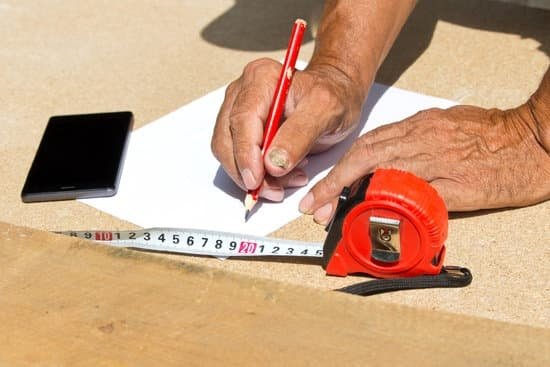Woodworking enthusiasts who are looking to add a touch of rustic charm to their projects often turn to the country style for inspiration. In this article, we will explore how to make country looking bows for woodwork, allowing you to incorporate this timeless aesthetic into your woodworking creations. From selecting the right materials and tools to adding rustic finishing touches, we will provide a comprehensive guide for bringing the warmth and simplicity of country style into your woodworking projects.
Understanding the country style is essential for creating authentic and visually appealing country bows for woodwork. Whether you’re a beginner or an experienced woodworker, mastering this classic style can elevate your projects and infuse them with a sense of tradition and nostalgia. By paying attention to details such as the choice of wood, carving techniques, and distressed finishing touches, you can achieve a charming country look that captures the essence of rural simplicity.
In the following sections, we will delve into the materials and tools needed for making country bows, as well as provide a step-by-step guide for carving and shaping the bow. Additionally, we will offer tips for creating a distressed country look that adds character and authenticity to your woodworking projects. Whether you’re creating furniture, decor pieces, or functional items, incorporating country bows can instantly evoke a sense of warmth and timelessness in your woodwork.
Materials and Tools Needed for Making Country Bows
Making country-style bows for woodwork requires specific materials and tools to achieve the desired rustic look. Here is a list of items you will need to get started:
Materials:
- Unfinished or rough-sawn wood
- Sandpaper
- Wood glue
- Stain or paint (optional)
- Varnish or sealant
Tools:
- Saw (hand saw or power saw)
- Wood carving knife or chisel
- Rasp and file set
- Clamp
- Measuring tape
- Pencil or marking tool
Once you have gathered all the necessary materials and tools, it’s important to choose the right type of wood for creating country bows. Keep in mind that the wood should have a natural, unfinished look to embrace the rustic charm of country style.
When selecting your wood, consider using varieties such as pine, cedar, or oak for their durability and rustic appearance. These types of wood are often used in country-style furniture and woodworking projects due to their natural grains and texture.
Remember that working with raw materials like rough-sawn lumber requires additional steps such as planing and squaring before beginning any woodworking project. Dedicate time to preparing your material properly before moving on to shaping and carving the country bow.
By following these guidelines on materials and tools needed for making country bows, you can start creating charming, rustic pieces for your woodworking projects that embrace the essence of countryside style.
Choosing the Right Wood for Country Bows
When it comes to making country bows for woodwork projects, selecting the right type of wood is crucial in achieving that charming rustic look. The ideal wood for creating country bows is often those with a natural, distressed appearance such as pine, cedar, or reclaimed wood. These types of wood not only add to the aesthetic appeal but also contribute to the overall durability of the bow.
Pine is a popular choice for crafting country bows due to its affordability and accessibility. It also has an attractive grain pattern that enhances the rustic feel of the finished bow.
Cedar, on the other hand, is known for its natural resistance to decay and insects, making it a practical option for outdoor woodworking projects. For an even more authentic country look, using reclaimed wood adds character and history to your bow, as it may have been previously used in old barns or farmhouses.
In addition to aesthetics, it’s important to consider the flexibility and strength of the wood when choosing materials for country bows. The right type of wood should be able to withstand tension without breaking or splintering. By carefully selecting the appropriate wood species, you can ensure that your country bows not only look charming but are also durable and functional.
| Wood Type | Characteristics |
|---|---|
| Pine | Affordable, attractive grain pattern |
| Cedar | Natural resistance to decay and insects |
| Reclaimed Wood | Adds character and history to the bowredominantly used; durable when sourced correctly |
Step-by-Step Guide to Carving and Shaping the Bow
Gathering the Necessary Tools and Materials
Before you begin carving and shaping your country bows, it is essential to gather all the necessary tools and materials. You will need a quality wood carving knife, chisels, mallet, wood rasp, sandpaper, and a vice to hold the wood in place. Additionally, make sure to have a suitable piece of hardwood for carving your bow, such as oak or hickory.
Marking and Shaping the Bow
Start by marking the outline of your bow on the wood using a pencil or marker. This will serve as a guide for shaping the bow. Use your wood carving knife to carefully carve away the excess wood around the outline. Slowly work your way around the entire shape of the bow, creating smooth and even curves.
Sanding and Smoothing
Once you have carved out the basic shape of your country bow, it’s time to use sandpaper to smooth out any rough edges and refine the curves. Start with a coarse grit sandpaper to remove any remaining uneven surfaces, then gradually move on to finer grits for a smooth finish. Be sure to pay close attention to detail during this step, as it will greatly impact the final look of your country bow.
By following these steps and taking your time with each stage of the process, you can create beautifully crafted country bows that add charm and character to your woodworking projects. Remember that practice makes perfect when it comes to wood carving, so don’t be discouraged if your first attempts are not flawless – embrace each opportunity as a learning experience in honing this traditional craft.
Adding Rustic Finishing Touches
Weathering the Wood
To achieve that authentic country look for your bows, consider weathering the wood. You can achieve this by using certain techniques such as distressing the wood with a hammer or chain, creating small dents and scratches to mimic years of wear and tear. Another option is to use a wire brush to create a worn look on the surface of the wood. These techniques will give your bows a rustic appearance that perfectly complements the country style.
Staining and Aging
After weathering the wood, you can further enhance the rustic look of your country bows by staining and aging them. Consider using a dark stain to add depth and richness to the wood, followed by lightly sanding it to achieve a slightly worn effect.
You can also add an aging solution made from vinegar and steel wool, which reacts with tannins in the wood to create an aged patina. Experiment with different staining and aging techniques to find the perfect combination for your country bows.
Embellishments
For an extra touch of country charm, consider adding embellishments such as metal accents or leather ties to your bows. Metal pieces like antique drawer pulls or rusted hinges can be repurposed and attached to the bows for a truly unique look. Leather ties can be used as decorative elements that also serve a functional purpose in securing the bow. These embellishments add character and individuality to your country bows, making them stand out in any woodworking project.
By following these steps for adding rustic finishing touches, you can create beautifully crafted country bows that enhance the overall charm of your woodwork projects.
Tips for Creating a Distressed Country Look
When it comes to creating a distressed country look for your woodwork projects, there are several techniques that can help achieve that charming and rustic aesthetic. One method is by using a technique called distressing, which involves intentionally aging the wood to give it a weathered appearance.
This can be achieved by using tools such as hammers, nails, or chains to create dents and dings on the surface of the wood. Sandpaper can also be used to create a worn-out look on the edges and corners of the bows.
Another way to create a distressed country look is by using traditional finishing methods such as staining and antiquing. Staining the wood with darker hues can help add depth and character to the bows, while antiquing involves applying layers of paint and then sanding them down to reveal the layers beneath, giving the wood an aged and worn appearance.
For those looking to add an extra touch of authenticity to their country bows, consider incorporating elements such as knots, cracks, or imperfections in the wood. These natural characteristics can further enhance the distressed look and add to the overall charm of the finished piece.
Incorporating these distressing techniques into your woodworking projects can help you achieve that classic country style that is both timeless and full of character. Whether you’re making furniture, decor pieces, or other wooden crafts, mastering these techniques will allow you to create beautiful country bows that exude a sense of rustic charm.
| Distressing Techniques | Details |
|---|---|
| Hammering | Create dents and dings on wood surface |
| Antiquing | Applying layers of paint and sanding for an aged appearance |
| Natural Imperfections | Incorporate knots, cracks, or imperfections for added authenticity |
Incorporating Country Bows Into Woodwork Projects
Country bows can add a touch of rustic charm to various woodwork projects, from furniture to decorative pieces. Here are some ideas on how you can incorporate country bows into your woodworking endeavors:
- Chair Backs: Use country bows as an accent on the backs of wooden chairs to give them a quaint and charming look.
- Cabinet Doors: Adding small country bows as handles or decorative elements to cabinet doors can enhance their vintage appeal.
- Picture Frames: Incorporate country bows as embellishments on wooden picture frames for a rustic and cozy feel.
Additionally, consider these tips for successfully integrating country bows into your woodwork projects:
- Consider the overall style and theme of the project before incorporating country bows, ensuring that they complement the design.
- Experiment with different types of wood and finishes to achieve the desired aesthetic for your country bows.
- Ensure that the size and proportions of the country bows are in harmony with the rest of the woodwork project.
Overall, adding country bows to your woodwork projects can infuse them with warmth and character, contributing to a charming countryside aesthetic.
By following these ideas and tips on how to make country looking bows for woodwork, you can bring a touch of rural allure to your woodworking creations. Whether it’s through chair backs, cabinet doors, or picture frames, there are numerous ways to incorporate these delightful accents into your woodworking projects. Experiment with different styles and finishes to achieve the perfect distressed country look that adds a cozy and inviting atmosphere.
Conclusion
In conclusion, embracing the charm of the country style in woodworking can be a rewarding and fulfilling experience. By understanding the key elements of this rustic aesthetic, choosing the right materials and tools, and following a step-by-step process for carving, shaping, and finishing country bows, woodworkers can create stunning pieces that exude warmth and character.
One of the most important aspects of making country bows for woodwork is to select the right type of wood. Whether it’s pine for its natural grain and texture or cedar for its durability and resistance to decay, choosing the appropriate wood will greatly enhance the overall look and feel of the finished product.
The use of distressed finishes and weathered textures can also contribute to achieving an authentic country look, evoking a sense of nostalgia and history in woodworking projects.
When incorporating country bows into woodwork projects, it’s essential to consider how they will complement the overall design. From simple decorative accents to functional elements such as cabinet handles or drawer pulls, these rustic bows can add a touch of timeless beauty to furniture, cabinets, doors, or any other woodworking creation. Ultimately, by mastering the techniques for creating country bows and integrating them thoughtfully into woodworking projects, artisans can bring a sense of tradition and heritage to their craftsmanship.
In essence, learning how to make country looking bows for woodwork allows woodworkers to capture the enchanting appeal of rural living within their creations. With attention to detail and a genuine appreciation for rustic beauty, artisans can infuse their woodworking projects with the timeless charm of the countryside.
Frequently Asked Questions
How Do You Make a Pretty Bow With Tools?
To make a pretty bow with tools, you will need a ribbon, scissors, and optionally a ruler or measuring tape. Start by cutting the ribbon to the desired length, then fold it into two equal loops in the center. Cross one loop over the other and pull it through the center to create the first knot.
Next, form two more loops on each side and secure them together with another knot in the center. Trim the ends of the ribbon to create a neat finish.
How Do You Make a Bow for a Railing?
Making a bow for a railing is simple yet effective for adding decoration to outdoor spaces. Start by choosing a durable ribbon that can withstand weather conditions. Measure and cut the ribbon to your desired length, then loop it around the railing and cross it over itself at the front.
Create two loops on each side and tie them together in the center with a knot. Fluff out and adjust the loops as needed to achieve a full and attractive bow on your railing.
How Do You Make a Layered Burlap Bow?
Creating a layered burlap bow adds rustic charm to any decor or gift wrapping. Begin by cutting three pieces of burlap ribbon in different sizes – small, medium, and large. Start with the largest piece at the bottom, then layer the medium piece on top, followed by the smallest piece on top of that.
Pinch all three pieces together at their centers and secure them with wire or thread. Fluff out each layer to create a full and textured burlap bow that can be used for various decorative purposes.

Hi everyone! I’m a woodworker and blogger, and this is my woodworking blog. In my blog, I share tips and tricks for woodworkers of all skill levels, as well as project ideas that you can try yourself.





